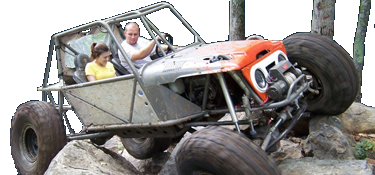View attachment 149968
This picture is a side view of a broken 3-pass mig weld. Weld was short circuit in 3/8 plate, 60 degree groove, 1/4 root opening with backing.
It is a beautiful example of how and improper "weave" technique can cause a great looking weld that is insufficient. The weld passed all visual requirements, but failed on the destructive bend.
The student was "weaving" too slow side to side and traveling across the plate too slow as well. In his mind he was attempting to "burn in" the sides of the weld by pausing too long. This caused the under side of the weld pool to become cold and not fuse with base metal and previous passes. The dark lines between the passes show that.
If you look at the cover pass on top, you can see the density change in the weld from top to bottom, light and tight grain to darker and more porous.
Again demonstrating the weld pool "puddle" was insulating the arc from penetrating the base metal and previous weld, while the top of weld pool has a nice outward appearance.
Parameters were IIRC:
Miller 252, .035 er70s6, 18.5v, 240 wfs, 135 amps, 75/25, 1/2 stickout, 15 degree drag angle.
Just wanted to back up what others have said, a strong critical weld is more important than the "dimes" look. Make sure you have your weave fast enough an keep your arc on the front edge of the puddle and not to let puddle build up and insulate arc from the base metal. However, do not weave so fast that undercut on weld toes "sides" becomes a greater problem.
Trigger welding or the tack tack tack method would cause the same issue pictured above between each tack, causing lack of fusion between each tack and between weld and base metal. This is why trigger welding is only suited for non structural items ie: cosmetic sheetmetal.



 Cause you seem like a teacher who teaches with a passion instead of just for the paycheck. And I've been their when the student eclipses the teacher. It's really a proud moment to see someone take good roots and grow taller than you were able!
Cause you seem like a teacher who teaches with a passion instead of just for the paycheck. And I've been their when the student eclipses the teacher. It's really a proud moment to see someone take good roots and grow taller than you were able!